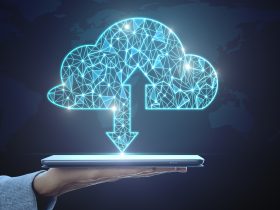If you have kids, you’ve probably noticed that the way they learn is quite different from the way you did. Technology has radically changed many areas of life, including education. This includes both formal schooling and the kind of informal learning kids engage in at home and in their spare time. Let’s look at the five top ways that innovative tech has disrupted how we learn.

Digital Learning in the Classroom
For most adults, being in class meant sitting with a printed textbook in front of you. Today, however, learning is increasingly digital with laptops and tablets replacing physical textbooks.
There are several advantages to this. Digital content can be updated much more quickly than traditional textbooks. Nor do students have to carry around heavy textbooks. One or two electronic devices can now replace a whole backpack full of books.
Technology is also used for homework, research, term papers and communication between teachers and students. In the near future, textbooks and handwritten assignments may be obsolete.
Kids Can Now Attend School Online
While it’s common knowledge that you can now earn a college degree online, it’s less well-known that kids can now attend free elementary, middle and high school online.
There are now fully accredited online schools where children can learn the same material they’d get in a traditional school. Classes are taught by state-certified teachers. This is a viable alternative to the type of homeschooling where parents have to do all the teaching.
More Collaboration Among Students
Technology has made the world smaller as people can communicate instantly over long distances. This is something that is enhancing education in many ways. Peer-to-peer learning, both between students within a school and between students in different locations, can provide many benefits.
For example, students studying a foreign language can practice with others who actually live in the country where that language is spoken. Students can have discussions about assignments, both on specialized platforms and on social media sites such as Facebook and Twitter, which expand their perspectives.
More Personalized Learning
One of the criticisms of mass education is that it uses a cookie-cutter approach to learning. The fact is, people have different learning styles and the same methods don’t work equally well for everyone.
Technology is making it easier for teachers to personalize learning in a way that addresses the needs of each student. Online platforms allow students to access material that’s suitable for their particular needs and challenges. In the past, students with differing needs had to be separated into different classes. Now, students can share a classroom but still get more personalized coursework.
Using Data to Analyze Results
Just as businesses are increasingly using Big Data to better understand customer behavior, educational institutions are using it to analyze how students and teachers perform. More precise data makes it possible to pinpoint strengths and weaknesses in a curriculum. It’s now much easier to make comparisons between teachers, classes, courses and learning tools.
Big data can do more than simply compare tests scores. It can be used to measure many variables, such as whether students perform better with longer or shorter school days or before or after lunch or exercising.
Technology is rapidly changing the way we learn. The classroom of today is already vastly different from the one of a mere decade ago. In the future, we can expect education to transform even more. More sophisticated electronic devices, Big Data and online learning will surely create classrooms that are completely different from those of the pre-digital era. While technology is not a solution to everything, it can make learning easier and more efficient when used properly.





























